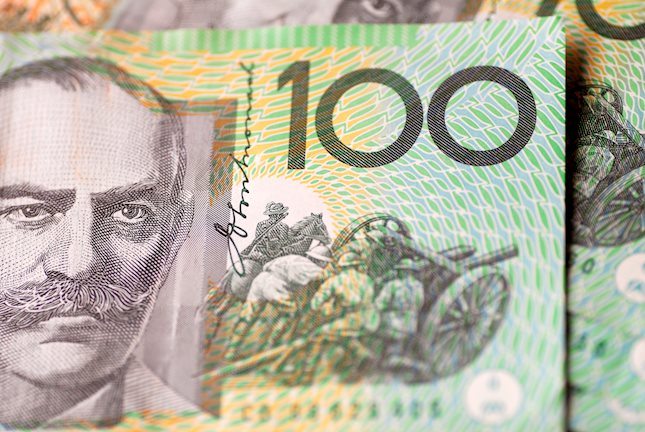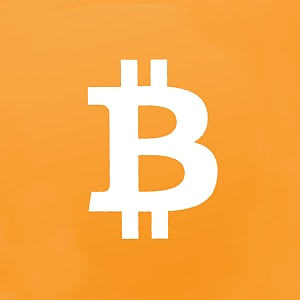- Gold price clings to gains prompted by steady monetary policy from the Fed.
- Weak US private payrolls and factory data have diminished the appeal of the US Dollar.
- The release of the US NFP would guide further action on the Gold price.
Gold price (XAU/USD) holds onto recovery prompted by a steady interest rate decision from the Federal Reserve (Fed). The precious metal aims to generate more gains in hopes that the Fed has concluded its rate-tightening campaign. Federal Reserve chairman Jerome Powell said progress was being made with inflation and whilst another rate hike was not out of the question he sounded less committed to the idea. As a consequence the US Dollar (USD) weakened and XAU/USD got a shot in the arm.
The downside in the yellow metal also remains cushioned due to Middle East conflicts and mixed US data. US private payrolls and Manufacturing PMI for October failed to meet expectations. Going forward, the Gold price and the US Dollar would be impacted by the Nonfarm Payrolls (NFP) for October. Investors would keenly watch for wage growth as it will exhibit a consumer spending outlook.
Daily Digest Market Movers: Gold price edges down as US Dollar attempts recovery
- Gold price trades inside Wednesday’s range after a recovery move from $1,972 inspired by a steady interest rate decision from the Federal Reserve.
- The Fed kept interest rates unchanged in the range of 5.25-5.50% for the second time in a row.
- The Fed kept expectations of further policy-tightening alive as the progress in consumer inflation taming toward 2% has slowed due to the high purchasing power of households.
- Fed Chair Jerome Powell acknowledged that the US economy is performing well but warned that businesses and households are facing tighter financial conditions.
- The US economy is performing strong on metrics of consumer spending and employment along with easing price pressures.
- The Q3 growth rate, released last week, was the strongest in 20 years due to robust retail demand and upbeat wage growth.
- While discussing rate cuts, Jerome Powell said that the central bank is not looking to lower interest rates but added that "It’s fair to say the question we’re asking is should we hike more” as officials weigh how they can guide inflation back to the 2% target.
- The US Dollar Index (DXY) extended its downside to near 105.80 as Jerome Powell’s commentary expressed that the central bank is less committed to the idea of hiking interest rates. In addition to a steady monetary policy decision, ADP Employment and Manufacturing PMI remained below estimates and weighed heavily on the US Dollar.
- The US ADP reported that private employers hired 113K job seekers in October, which were lower than expectations of 150K but significantly higher than September’s reading of 89K.
- The ISM reported that the Manufacturing PMI slumped to 46.7 from its highest reading of 49.0 in September while economists forecasted a steady performance. The factory data remains below the 50.0 threshold for the 12th time in a row.
- New factory orders dropped significantly to 45.5 against a 49.2 reading from September.
- Investors await the US Nonfarm Payrolls (NFP) data, which will be published on Friday. As per the consensus, the labor force is expected to have expanded by 180K in October against the former release of 336K. The Unemployment Rate is seen unchanged at 3.8%.
- Apart from the employment numbers, investors will focus on the labor cost data. Monthly Average Hourly Earnings is seen expanding by 0.3% vs. 0.2% growth in September. The annual earnings data rose by 4.0% against 4.2%.
- Meanwhile, the US Department of Labor has reported that weekly jobless claims rose significantly for the week ending October 27. Individuals claiming jobless benefits rose to 217K from expectations of 210K and the former release of 212K.
- Middle East tensions keep broader appeal for bullion strong as Israeli airstrikes come close to hitting the Al Quds hospital in Gaza in which several displaced civilians are sheltering.
- A full-scale ground invasion by the Israeli Defence Forces (IDF) would increase the odds of Iran’s intervention, which would widen Middle East conflicts.
Technical Analysis: Gold price struggles around $1,990
Gold price turns sideways around $1,990 after discovering buying support near $1,970 as investors seek fresh development on Israel-Palestine tensions. The precious metal continues to trade inside the $1,970-2,010 range ahead of the crucial labor market data. The yellow metal aims to recapture the psychological resistance of $2,000 as the broader outlook is bullish due to the upward-sloping 50 and 200-day Exponential Moving Averages (EMAs).
Gold FAQs
Why do people invest in Gold?
Gold has played a key role in human’s history as it has been widely used as a store of value and medium of exchange. Currently, apart from its shine and usage for jewelry, the precious metal is widely seen as a safe-haven asset, meaning that it is considered a good investment during turbulent times. Gold is also widely seen as a hedge against inflation and against depreciating currencies as it doesn’t rely on any specific issuer or government.
Who buys the most Gold?
Central banks are the biggest Gold holders. In their aim to support their currencies in turbulent times, central banks tend to diversify their reserves and buy Gold to improve the perceived strength of the economy and the currency. High Gold reserves can be a source of trust for a country’s solvency. Central banks added 1,136 tonnes of Gold worth around $70 billion to their reserves in 2022, according to data from the World Gold Council. This is the highest yearly purchase since records began. Central banks from emerging economies such as China, India and Turkey are quickly increasing their Gold reserves.
How is Gold correlated with other assets?
Gold has an inverse correlation with the US Dollar and US Treasuries, which are both major reserve and safe-haven assets. When the Dollar depreciates, Gold tends to rise, enabling investors and central banks to diversify their assets in turbulent times. Gold is also inversely correlated with risk assets. A rally in the stock market tends to weaken Gold price, while sell-offs in riskier markets tend to favor the precious metal.
What does the price of Gold depend on?
The price can move due to a wide range of factors. Geopolitical instability or fears of a deep recession can quickly make Gold price escalate due to its safe-haven status. As a yield-less asset, Gold tends to rise with lower interest rates, while higher cost of money usually weighs down on the yellow metal. Still, most moves depend on how the US Dollar (USD) behaves as the asset is priced in dollars (XAU/USD). A strong Dollar tends to keep the price of Gold controlled, whereas a weaker Dollar is likely to push Gold prices up.
Information on these pages contains forward-looking statements that involve risks and uncertainties. Markets and instruments profiled on this page are for informational purposes only and should not in any way come across as a recommendation to buy or sell in these assets. You should do your own thorough research before making any investment decisions. FXStreet does not in any way guarantee that this information is free from mistakes, errors, or material misstatements. It also does not guarantee that this information is of a timely nature. Investing in Open Markets involves a great deal of risk, including the loss of all or a portion of your investment, as well as emotional distress. All risks, losses and costs associated with investing, including total loss of principal, are your responsibility. The views and opinions expressed in this article are those of the authors and do not necessarily reflect the official policy or position of FXStreet nor its advertisers. The author will not be held responsible for information that is found at the end of links posted on this page.
If not otherwise explicitly mentioned in the body of the article, at the time of writing, the author has no position in any stock mentioned in this article and no business relationship with any company mentioned. The author has not received compensation for writing this article, other than from FXStreet.
FXStreet and the author do not provide personalized recommendations. The author makes no representations as to the accuracy, completeness, or suitability of this information. FXStreet and the author will not be liable for any errors, omissions or any losses, injuries or damages arising from this information and its display or use. Errors and omissions excepted.
The author and FXStreet are not registered investment advisors and nothing in this article is intended to be investment advice.
Recommended content
Editors’ Picks

AUD/USD keeps the red near 0.6200 after Chinese inflation data
AUD/USD keeps losses near the 0.6200 mark following mixed Australian data and as expected China's inflation numbers. The RBA's dovish shift and China's economic woes add to the weight on the Aussie as risk sentiment remains tepid. Fedspeak eyed.

USD/JPY: Bears attack 158.00 on strong Japanese wage growth data
USD/JPY drifts lower to test 158.00 early Thursday after data showed that base salaries for Japanese workers increased at the fastest pace in 32 years. The data backs the case for the BoJ to raise interest rates, which, along with the cautious market mood, benefits the safe-haven Yen and drags the pair away from a multi-month top.

Gold price retreats toward $2,650 despite risk aversion
Gold price is retreating from near a monthly high of $2,670 in Thursday's Asian trading. Resurgent haven demand for the US Dollar amid risk aversion weigh on Gold price even as US Treausry bond yields extend pullback. Focus shifts to Fedspeak amid holiday-thinned trading.

Has Bitcoin topped for the cycle? Here's what key metrics suggest
Bitcoin experienced a 2% decline on Wednesday as the cryptocurrency market grapples with recent losses. On-chain data has indicated a shift in the accumulation of the leading cryptocurrency, suggesting that holders are increasingly selling their assets.

Bitcoin edges below $96,000, wiping over leveraged traders
Bitcoin's price continues to edge lower, trading below the $96,000 level on Wednesday after declining more than 5% the previous day. The recent price decline has triggered a wave of liquidations across the crypto market, resulting in $694.11 million in total liquidations in the last 24 hours.

Best Forex Brokers with Low Spreads
VERIFIED Low spreads are crucial for reducing trading costs. Explore top Forex brokers offering competitive spreads and high leverage. Compare options for EUR/USD, GBP/USD, USD/JPY, and Gold.